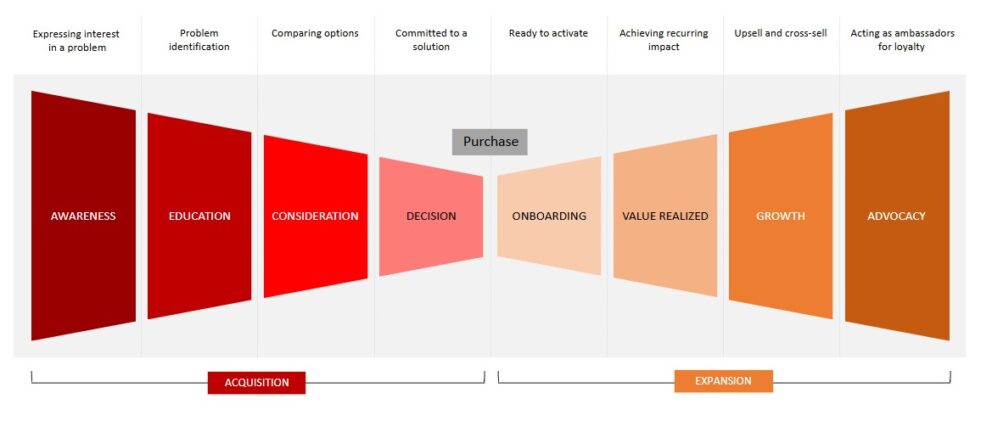How to do ABM Without an ABM Tool- Part III

By Lauren (Dichter) Bensussen, Sr. Marketing Consultant at Heinz Marketing
Welcome to part III of How to do ABM Without an ABM Tool! In this installment, I’ll dive into each of the Need-to-Have Functions, Processes, and Precedents listed in Part I. Having the right mix of tools for ABM is important, but a toolkit can only be effective if the one wielding the tools has enough basic knowledge, practice, and experience to use them properly. In the same vein, your mix of ABM tools is only as effective as the foundational elements of your marketing strategy and operations.
Without further ado, here’s what’s needed to drive larger deal sizes, achieve faster sales cycles, and improve win rates.
Need-to-Have Functions, Processes, and Precedents:
Target Account Alignment Between Marketing and Sales
If Marketing is targeting one group of prospects while Sales is focusing their efforts on another, how is ABM supposed to work? In theory, it sounds simple to get Marketing and Sales fully aligned on target accounts. But in reality, obstacles abound.
The first step to creating a list of target accounts is to define your ideal customer. With combined data and reasoning from both Marketing and Sales, plus the resolve to debate respectfully and compromise when necessary, your organization should have no problem developing a target account definition that makes everyone happy.
Ensure stakeholders are on the same page by holding as many meetings as it takes to agree on a set of accounts to focus efforts on. This takes concerted effort by both teams to listen to each other’s reasoning behind why particular accounts are ripe for ABM, and then coming out of that discussion with a list that everyone can get behind.
Once that initial set of accounts has been solidified, discuss the marketing and sales tactics that will be used at each stage of the funnel. For example, Sales has the opportunity to let Marketing know they don’t want Marketing touching the prospect once the prospect and sales rep have talked on the phone. On the flip side, Marketing can let Sales know—ideally through automated tracking software—what tactics have been used on the prospects thus far.
It’s critical to continuously iterate on your target account list. So, keep revisiting the list every quarter (or whatever makes sense for your organization) with both Marketing and Sales in the room. As your teams learn more about their prospects, update the list in a collaborative setting.
Target Account Prioritization Model
After creating a target account list using a combination of criteria from your agreed upon Ideal Customer Profile and the sales org’s input, the real work begins. Account segmentation allows you to isolate the accounts on your target list that are the absolute highest priority from those that are still a priority, but less-so.
To identify high priority accounts, you must organize your list of target accounts by specific characteristics. Every organization is unique, but if you’re unsure of how to delve even further into targeting madness when you’ve already developed a target account list, I suggest starting with one of these characteristics: revenue potential, engagement, or potential to convert.
Account segmentation results in various tiers of accounts—the simplest model uses 3 tiers:
1= high priority accounts
2= medium priority accounts
3= low priority accounts
Let’s say you’ve chosen engagement as your characteristic to tier based on. The target accounts showing the highest engagement would be your Tier 1s, the next highest your Tier 2s, and the least engagement your Tier 3s.
Depending on the engagement scenario, this could result in current customers as your Tier 1s, accounts you’ve been targeting for a while now as your Tier 2s, and accounts you’ve never targeted before as your Tier 3s. The key is to determine a range of values—like engagement points or minutes—that represent each tier.
And if after a quarter, experience has shown you that some Tier 1 accounts should actually be in Tier 2 and vice versa, you can simply adjust your tier definitions. That’s the beauty of ABM! Its iterative nature allows you to work with the market instead of on your own, so that no revenue opportunities are left on the table.
As Much Integration As Possible Between All Tools
This one can be a doozy for some organizations, and for various reasons—anywhere from disagreement over which tools to even purchase, all the way to a lack of monetary or IT resources to get the integration done.
But that resistance and those challenges don’t make it any less critical to a successful ABM program. If anything, it proves how significant getting all platforms fully integrated really is.
Integrating your marketing technologies is a main component of ABM because it allows your prospects and customers to enjoy a seamless end-to-end experience with your business. Marketing needs visibility into what happens once prospects are having conversations with Sales, and Sales needs visibility into Marketing’s contribution.
The complete visibility that full integration affords an organization means:
- Marketing sees how its MQLs/MQAs pan out, and thus can continuously improve upon its processes, definitions, and tactics
- Sales understands the work that Marketing puts into generating demand, and sees the touches their prospects have previously had with the company, thus informing them on exactly how to tailor their approach to each lead/account
Good Data Management
Bad data management looks like:
- old, out-of-date values that render the data irrelevant
- incomplete data sets/missing fields, making it tough to paint a holistic picture of an account or person
- nonsense entries from prospects who fill out forms via free-text name, company, or title fields, making it impossible to gather data at all
- a lack of data standardization, making it tough to segment prospects accurately and automate programs effectively
On the contrary, good data management is the solid footing your ABM program needs to start off strong. An accurate, up-to-date, standardized database of your own provides the whole revenue team with an integrated view of target accounts and their buying committee members.
The Account-Based Marketing Consortium has put together a detailed “How-To” for the data management process; give it a read to learn about aggregating, analyzing, and appending data in a way that enables your revenue team to take strategic and streamlined actions.
This has been Part III of the series How to do ABM Without an ABM Tool. If you haven’t already, check out parts I and II. I hope you feel educated about what functions, processes, and precedents must be in place for ABM to thrive. Which of the functions, processes, and precedents have you already established? Which is next on your to-do list? Feel free to share your thoughts with us in the comments section below.





